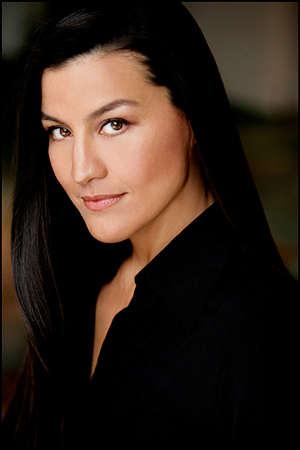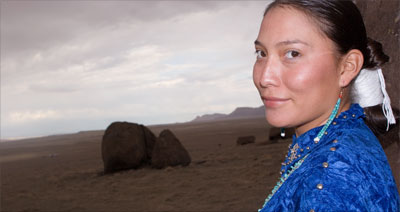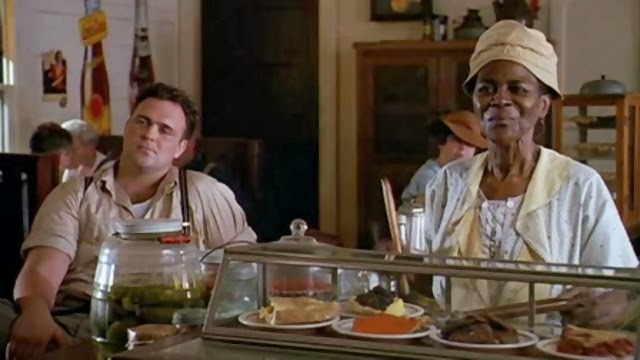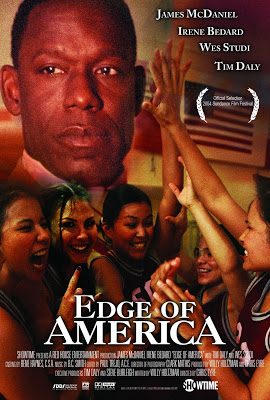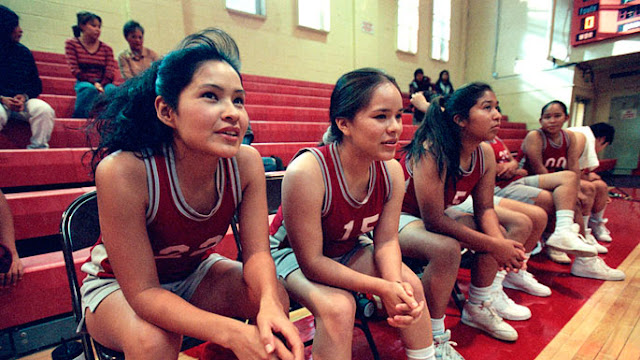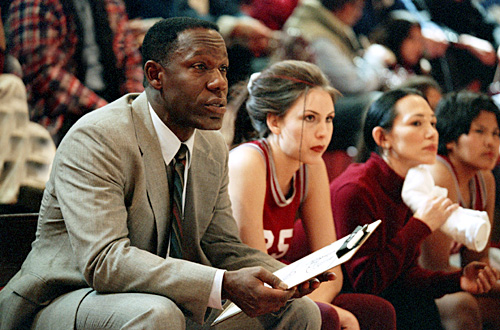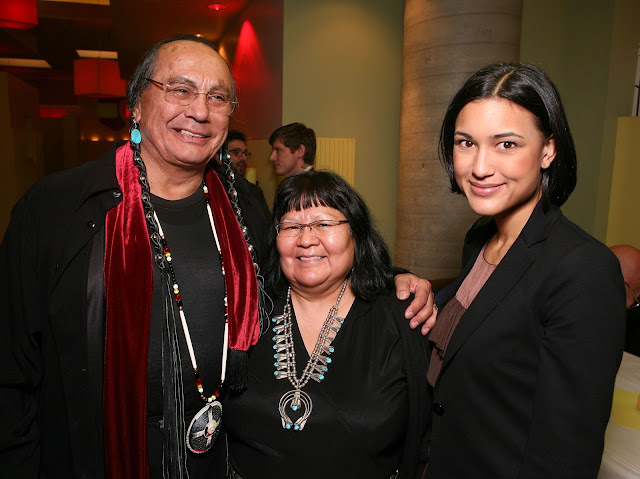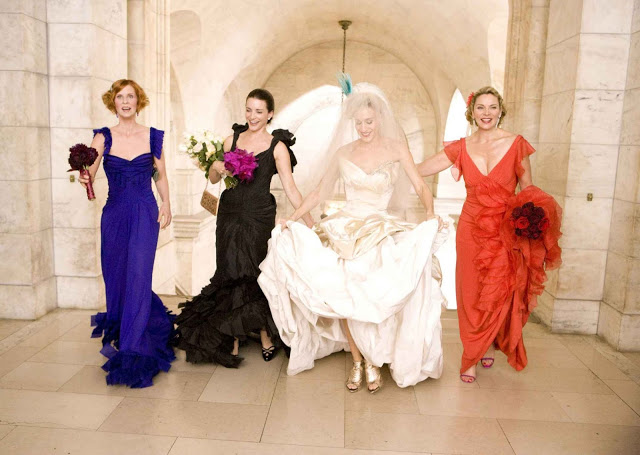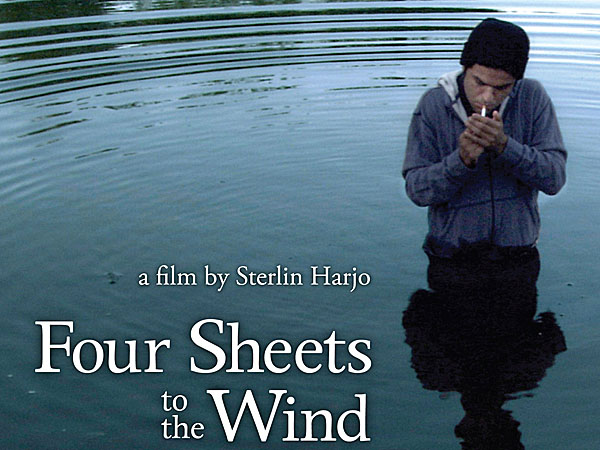
Winner of Best Actor (Cody Lightning, Plains Cree) and Best Director (Sterlin Harjo, Seminole/Creek) from the American Indian Film Festival, Four Sheets to the Wind (2007) tells a no-holds-barred realistic tale of survivance, loss, family, communication, and discovery in the best spirit of great independent films. As the Muscogee-language narrator tells the story of Rabbit and Bear at the opening of the film, the camera shows a man dragging another man’s body across the screen and down a dirt road, past a No Trespassing sign, and into a pond. Seminole/Creek Cufe Smallhill (Cody Lightning) discovers his father’s body early in the morning and follows his father’s wishes to rest in the pond. When he returns home to share his father’s suicide note with his mother, Cufe says, “He told me the other day that he never wanted to be buried. Said funerals ain’t nothin’ but a big circus.”
[youtube_sc url=”http://www.youtube.com/watch?v=XCm2v8Mq8YI”]
In the midst of this sad moment, the story takes a darkly humorous turn as Cufe, his mother Cora Smallhill (Jeri Arredondo), and cousin Jim (Jon Proudstar) come up with a plan for the expected funeral. As preparations continue, Cufe asks Jim, “You ever feel like just gettin’ the fuck outta here?” Jim responds, “Yeah. But where would I go? I mean, this is home.”
These words hang in the air with a practical sense of finality. The transition shots between scenes showcase the rural Oklahoma landscape, focusing the viewer’s attention on an almost idyllic world of rolling hills, open water, and sunsets. Director Sterlin Harjo (Seminole/Creek) spoke with Christian Neidan for Camera in the Sun about the importance of the Oklahoma landscape to Four Sheets to the Wind: “For me, my films and stories — they are the place that they’re set in,” Harjo said. “I grew up in the country, like a normal kid, but also we had superstitions and stuff that were sort of ingrained in us, and it was just a cool magical way to grow up. So, for me it’s really important to shoot here, and I was telling somebody the other day I don’t know what I’d do if I had to shoot a film outside of the state” (camerainthesun.com).

Within the film, after a funeral featuring a closed casket filled with weights and watermelons, Cufe decides to leave his rural home environment to visit his sister, Miri (Tamara Podemski, Anishinaabe/Israeli), and it is in Tulsa where Cufe begins to discover his own strength. When Francie invites Cufe to travel with her, he tells Cora and she wants to know, “What’s with this girl? Do you talk?” Cufe says they do talk and she warns him not to “make it a sex thing, ‘cause it’ll never work.”

Cufe’s relationship with his sister, his somewhat shy interactions with her neighbor, Francie (Laura Bailey), and his conversations with his mother show that he isn’t as uncommunicative as his father. One evening, Cora returns from dinner with a friend and Cufe blames her for not being “helpful to dad,” but Cora responds gently, “It was his choice, we didn’t make it for him. And it’s not my fault that your daddy and I didn’t get along. He was a hard man to get along with. Right there near the end, there was weeks and I’d realize he hadn’t said a word. Weeks. Is life much different now that he’s gone? I miss him, too, but I don’t know.” Cufe doesn’t answer.

At breakfast one morning after Cufe arrives in Tulsa, Miri asks, “So you had, like, a whole conversation with Francie?” Cufe says with a smile, “Yeah.” Miri smiles back and says, “Well, I guess you’re not gonna turn out like dad after all.”

From Cufe’s visual reaction, it is clear that he is conflicted about this – whether he wants to be like his dad or not. When Francie asks Cufe to tell her about his dad, he responds, “He wouldn’t tell you what he felt about you, but when he didn’t think anyone was looking, he’d give you this approving glance, a smile, an approving look, you know. His silence felt like comfort. . .we’d go fishing and we’d be on the pond all day, barely even say anything, share maybe four words with each other, but it felt like we’d been talking all day.” Through this softly delivered monologue, it is clear that Cufe misses his dad and that things really are different now that he’s gone. Francie’s response is to kiss Cufe, but this doesn’t feel forced or cliched: it feels natural and real, which is a testament to the solid acting, music background, and camera work.
Another player in this film is alcohol. The title is a play on the inebriation phrase “three sheets to the wind” and alcohol certainly plays a part in this story. Jim tells Cufe the story of the time Cufe’s dad had been drinking all afternoon, but was able to alleviate Jim’s fear of a tornado by doing a dance in the front yard. Miri parties a lot in Tulsa and seems to make questionable dating choices, getting drunk and having sex with men because they “pick up the tab.” Soon after his arrival, Cufe attends a party with Francie where red Solo cups and kegs are prevalent. At this party, an inebriated white man sitting on a sofa near Cufe asks him, “Where have all the Indian gone,” and Cufe’s response reflects the ridiculousness of the question.
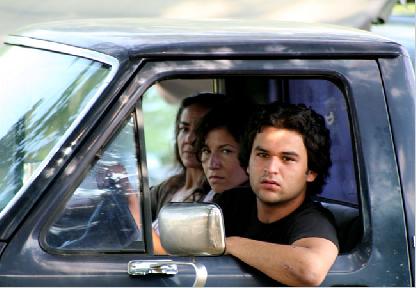
Four Sheets to the Wind is an example of Indigenous survivance in this land as the characters interact with each other in the rural Seminole/Creek community in Oklahoma and with the faster-paced city of Tulsa. Anishinaabe scholar and writer Gerald Vizenor wrote in Fugitive Poses: Native American Indian Scenes of Absence and Presence (1998), “Survivance. . . is more than survival, more than endurance or mere response; the stories of survivance are an active presence. . . The native stories of survivance are successive and natural estates, survivance is an active repudiation of dominance, tragedy, and victimry.” The characters of this Sterlin Harjo film certainly endure, but they also repudiate tragedy and victimry as they use humor and the lessons of the past to move forward into the future together.
At the end of the film, the narrator speaks the following words in the Muscogee language as viewers see where the characters are now: “People come around in circles. Never ending circles, but you’re never that far away from home.” The tagline for this film is “See life for what it gives you.” Cufe, Cora, Miri, and Francie not only learn to see life for what it gives them, but they learn from those moments and do not fall victim to despair.
Four Sheets to the Wind is available to stream from Amazon, iTunes, or on Netflix DVD.
_____________________________________
Dr. Amanda Morris is an Assistant Professor of Multiethnic Rhetorics at Kutztown University of Pennsylvania with a specialty in Indigenous Rhetorics.

